Seedless Vascular Plants: Ferns, Fern Allies
1/65
Earn XP
Description and Tags
General Botany Lab Final
Name | Mastery | Learn | Test | Matching | Spaced |
|---|
No study sessions yet.
66 Terms
Seedless Vascular tissue has ______ _______
vascular tissue
Most seedless vascular plants have _______
megaphylls
Vascular Tissue:
Xylem and Phloem
Megaphylls:
True Leaves
Most Seedless Vascular Plants have _____
roots
Seedless Vascular Plants reproduce through ______
spores
In seedless vascular plants the _____ is dominant
sporophyte
Phylum Lycophyta are _____
seedless
Phyllum Lycophta reproduce by _____
spores
Phylum Lycophyta have ____ and _____
roots and leaves
What are the 3 common genera of Phylum Lycophyta?
Lycopodium, Selaginella, Isoetes
Phylum Lycophyta Alternation of _________
generations
Lycopodium:
homosporous
Equisetum has reduced megaphylls in _______
whorls
Equisetum internodes are ______
long
Equisetum have photosynthetic ridged _____
stems
Equisetum have ______ subtending sporangia
sporangiophore
Equisetum have sporangia that are contained in ______
strobilus
In Equisetum, the ________ are attached to central axis forming strobilus
sporangiophores
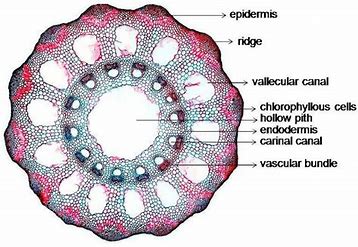
Equisetem Cross Section
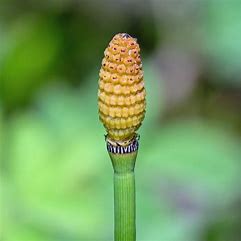
Equisetum Strobili
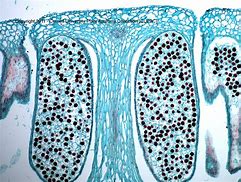
Equisetum Cross Section
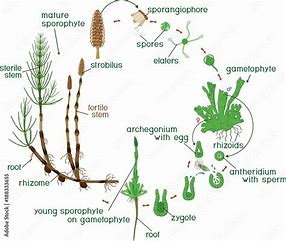
Equisetum Life Cycle
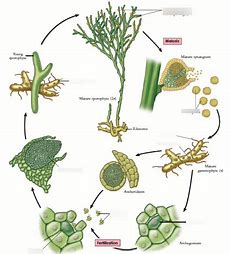
Psilotum Life Cycle

Psilotum
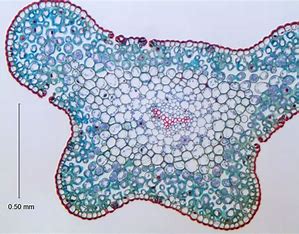
Psilotum Stem Cross Section
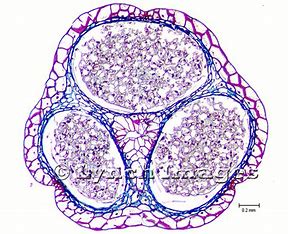
Psilotum Synangium Cross Section
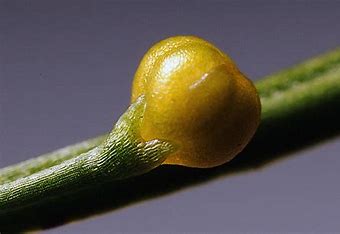
Psilotum Synangium
Monilophytes: Division
Pteridophyta

Pteridophyta
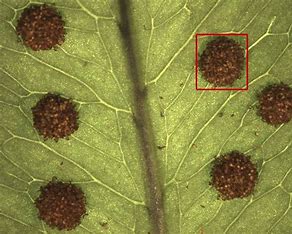
Pteridophyta Sorus
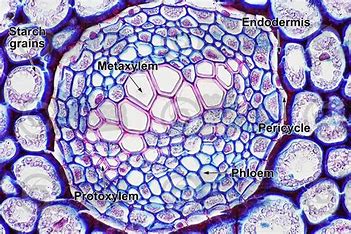
Polypodium Rhizome Cross Section
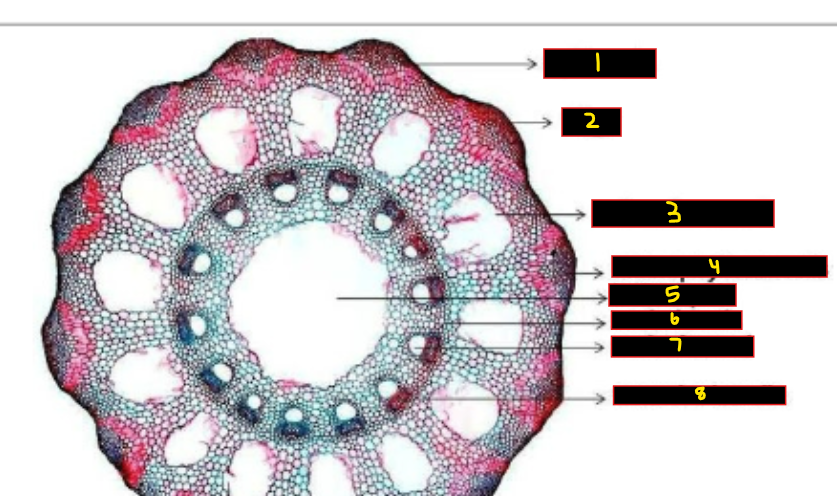
What is 1?
Epidermis
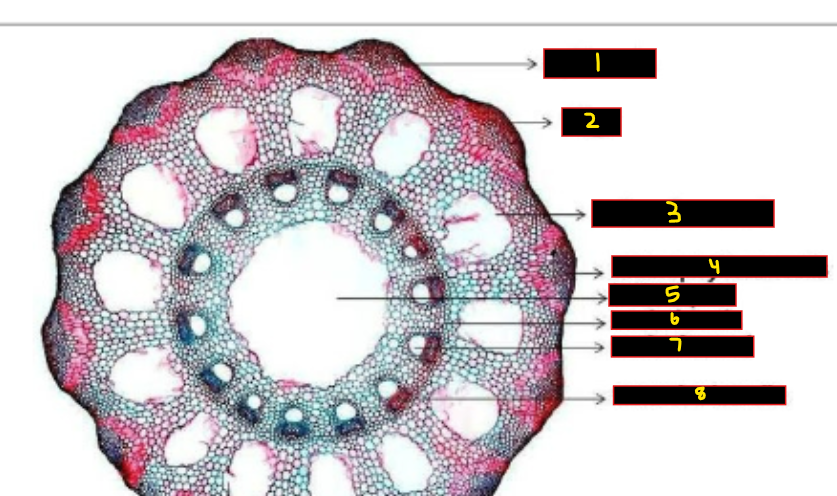
What is 2?
Ridge
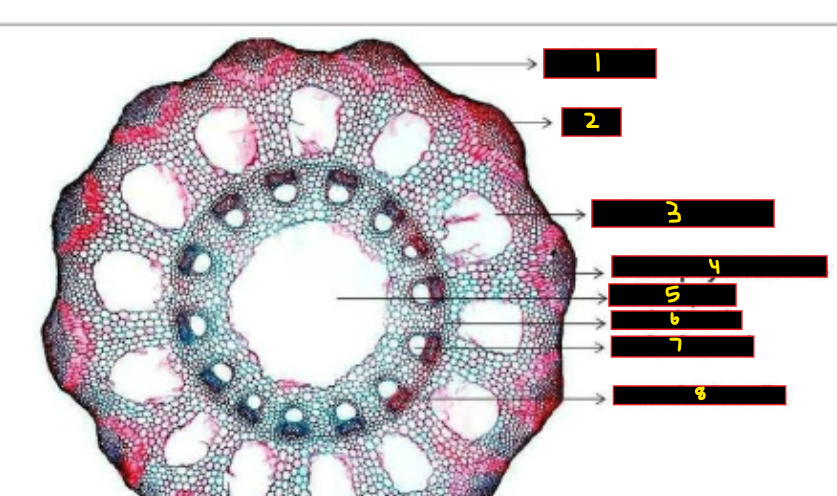
What is 3?
Vallecular canal
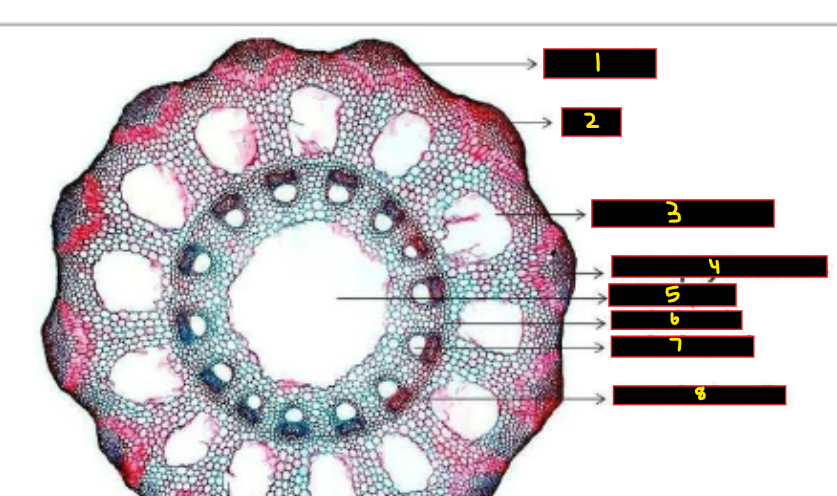
What is 4?
Chlorophyllous cells
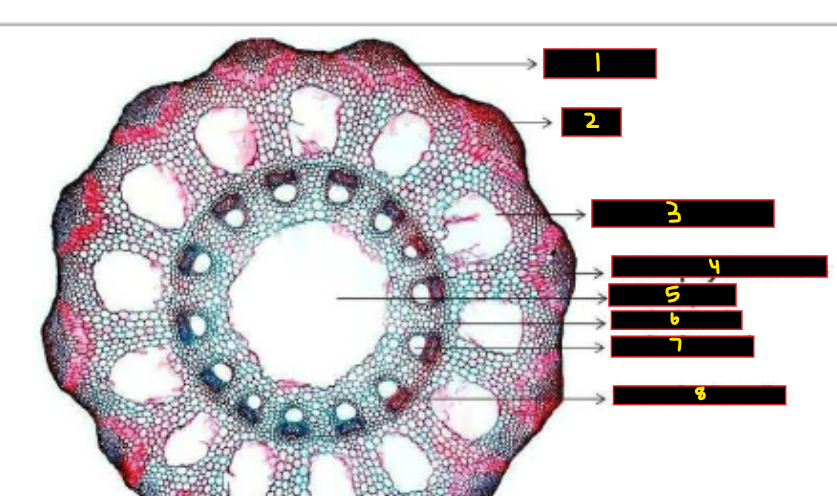
What is 5?
Hollow Pith
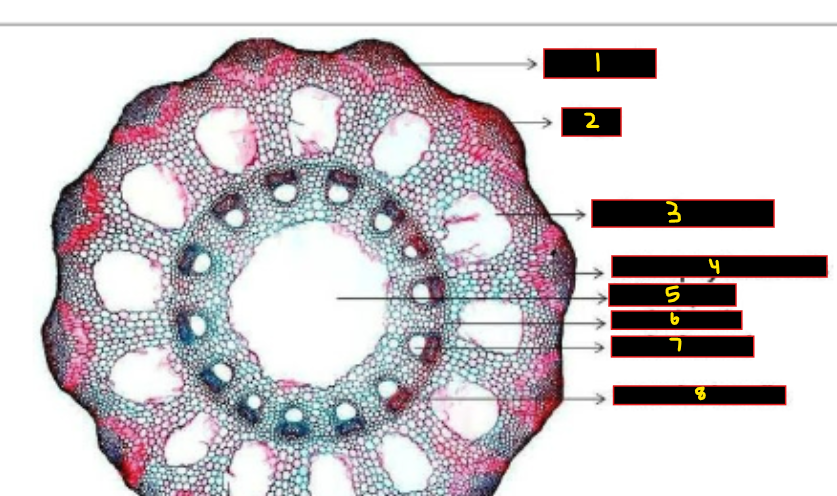
What is 6?
Endodermis
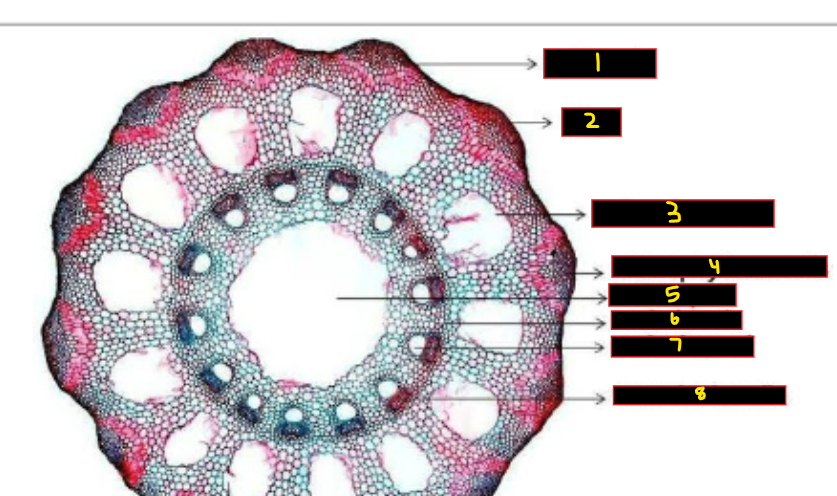
What is 7?
Carinal Canal

What is 8?
Vascular Bundle
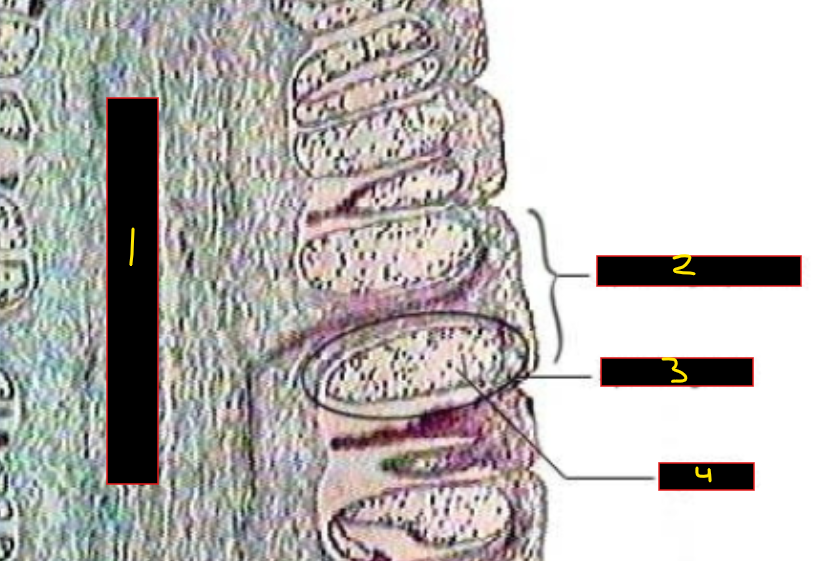
What is 1?
Axis of Strobilus
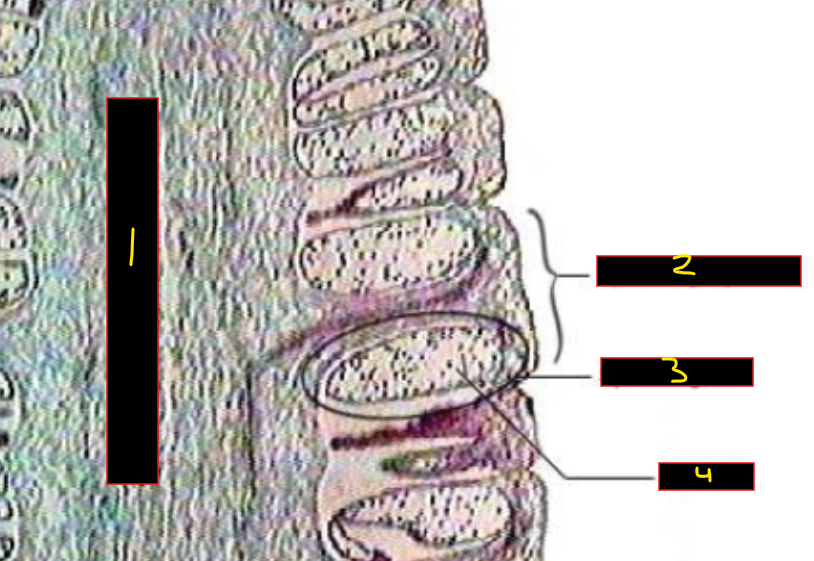
What is 2?
Sporangiophore

What is 3?
Sporangium
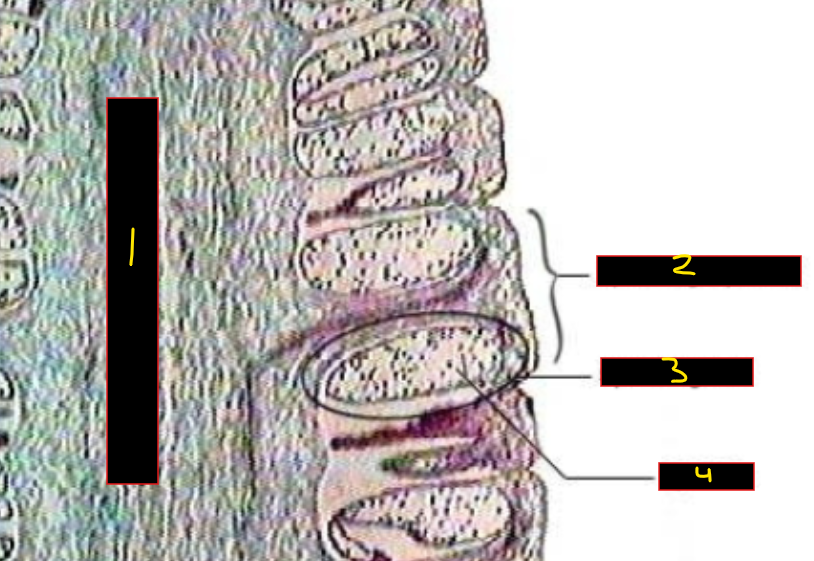
What is 4?
Spores
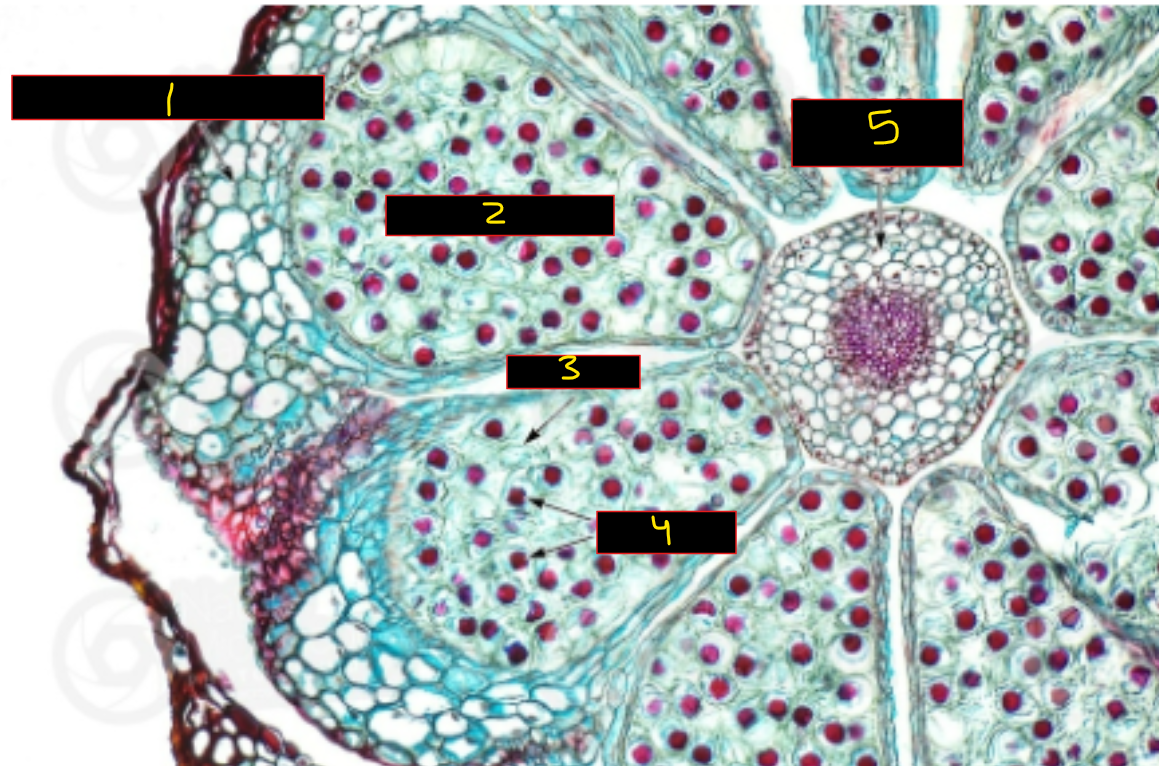
What is 1?
Sporangiophore
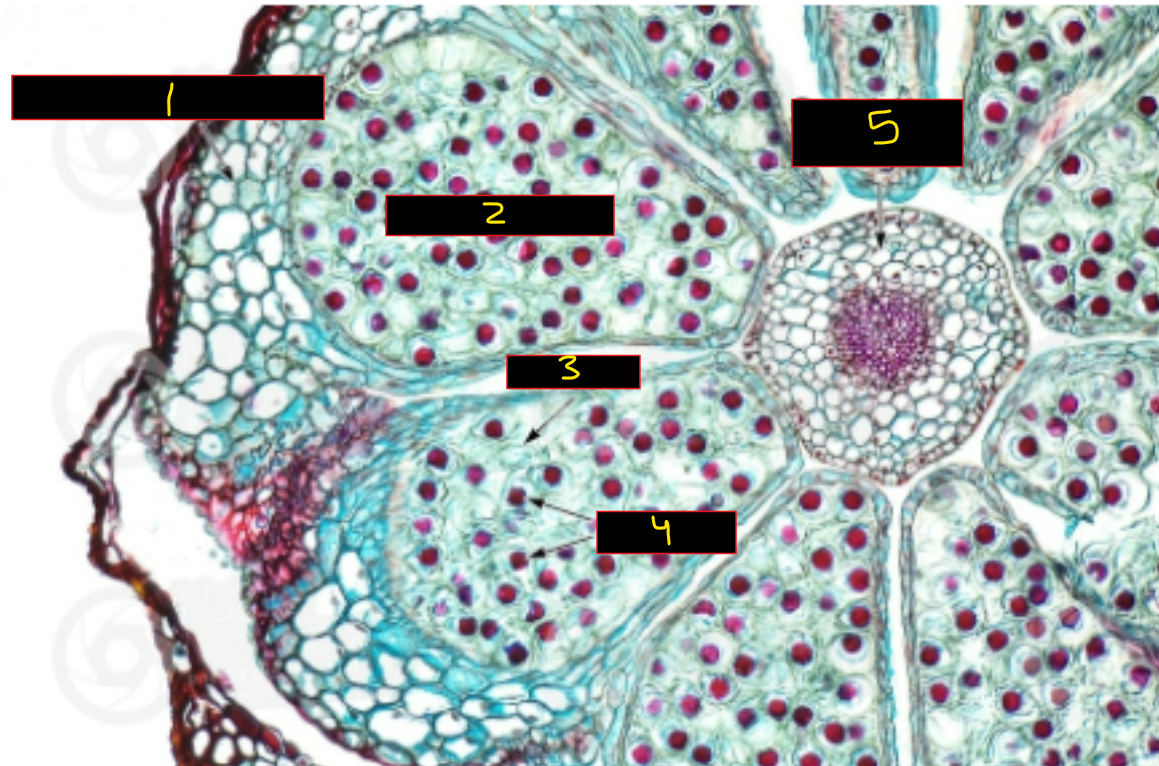
What is 2?
Sporangium
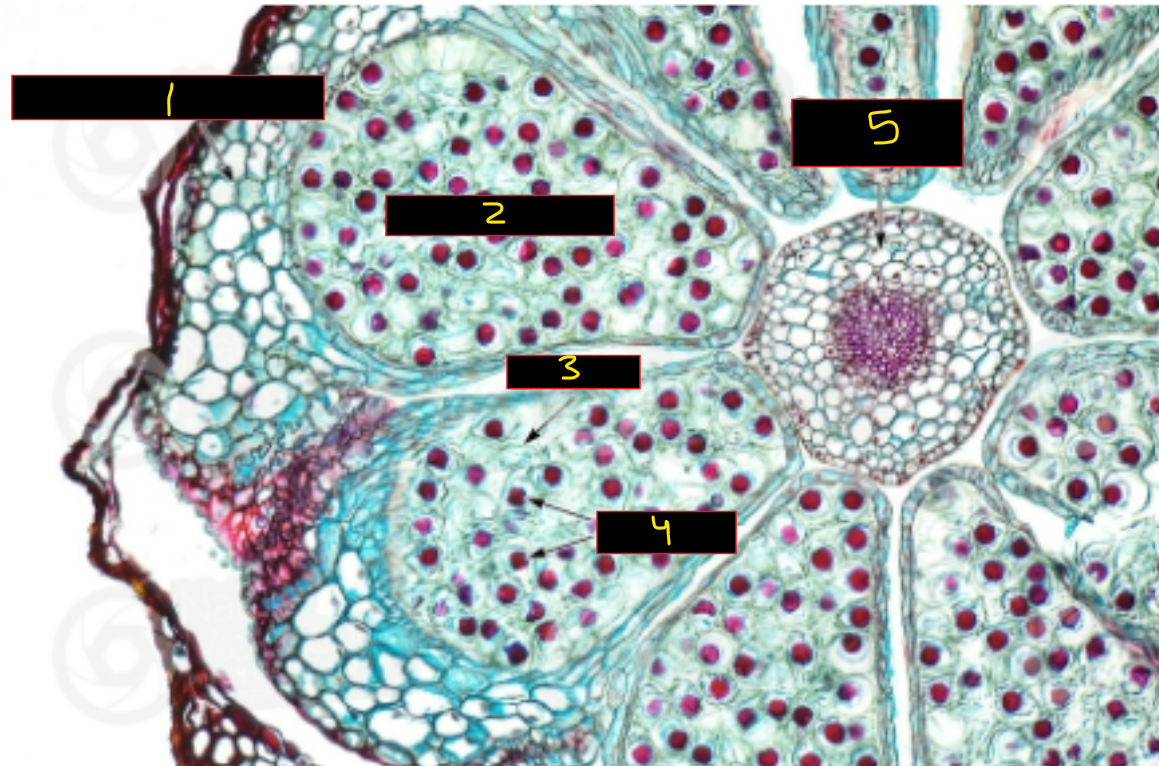
What is 3?
Elaters
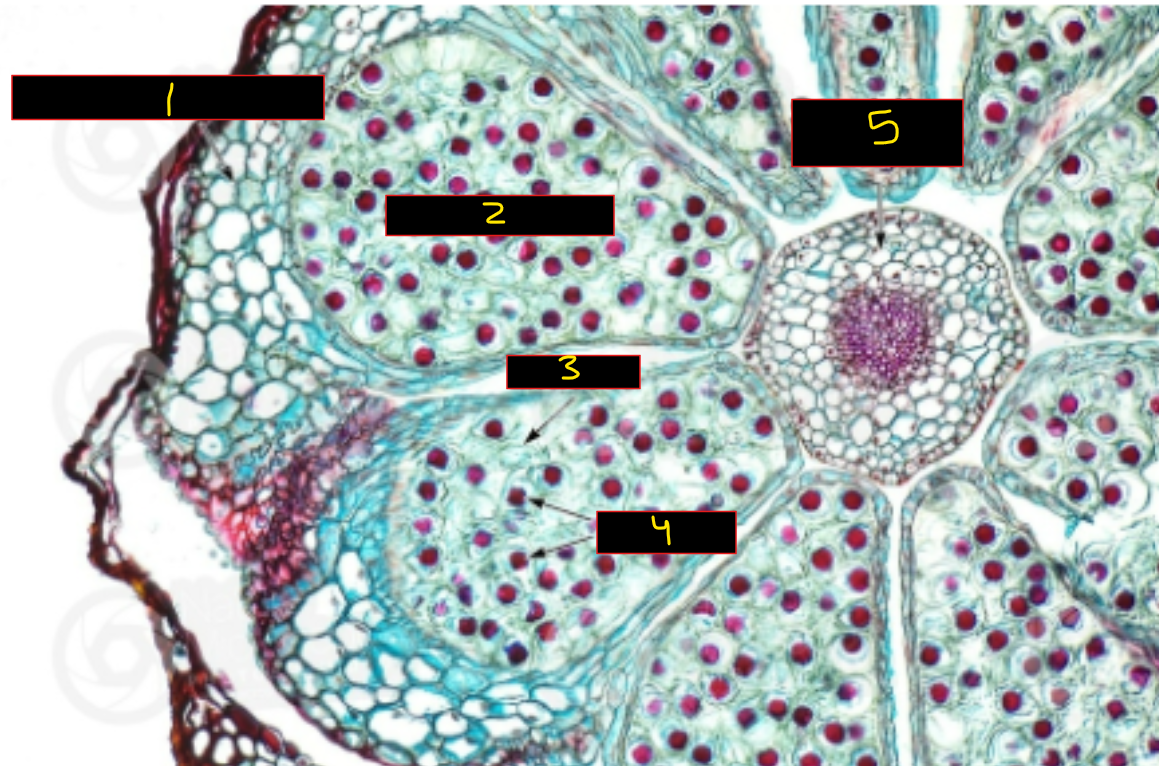
What is 4?
Spores
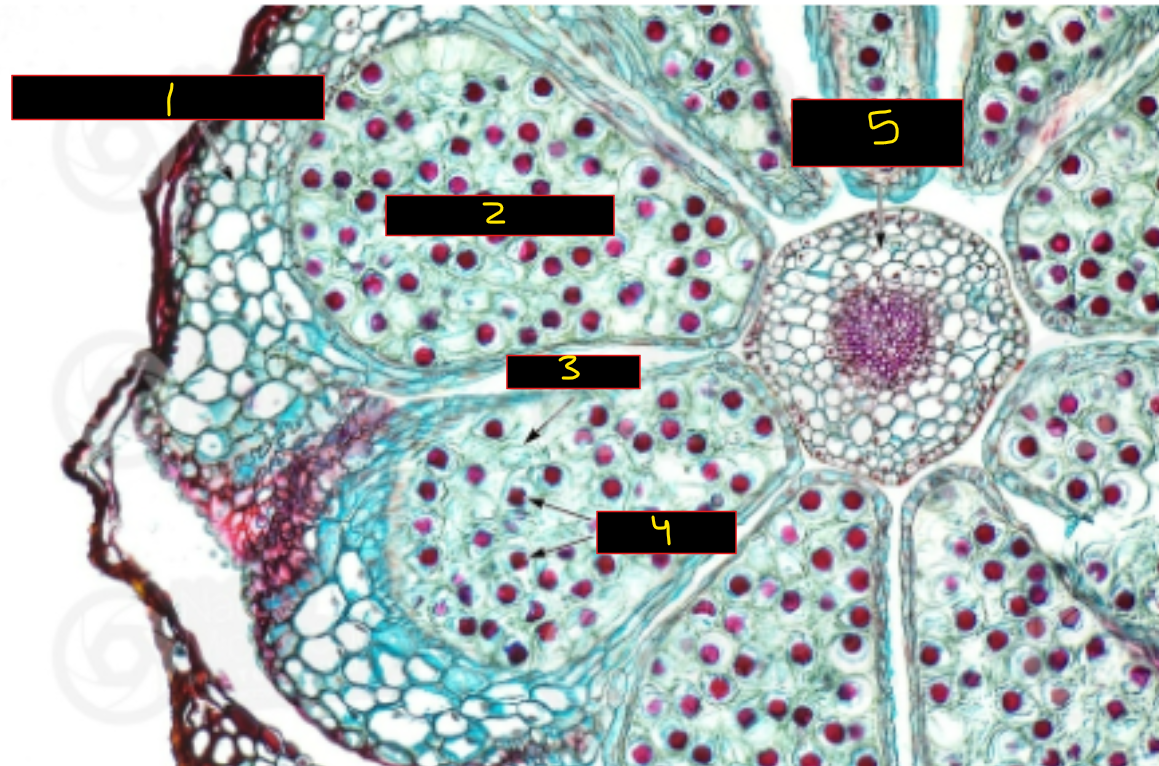
What is 5?
Strobilus axis
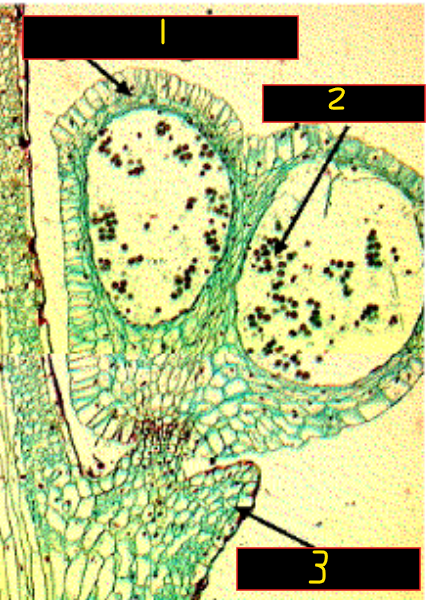
What is 1?
Synangium
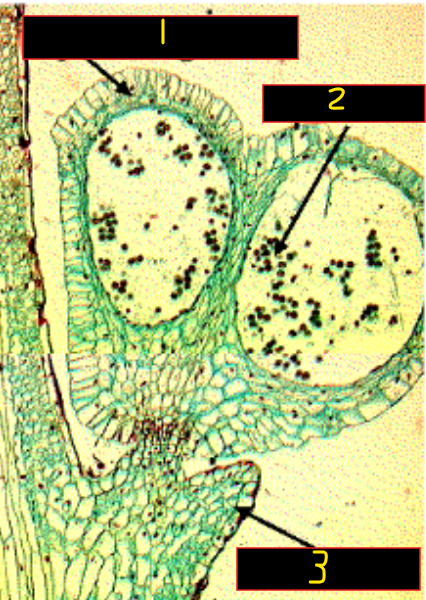
What is 2?
Spores
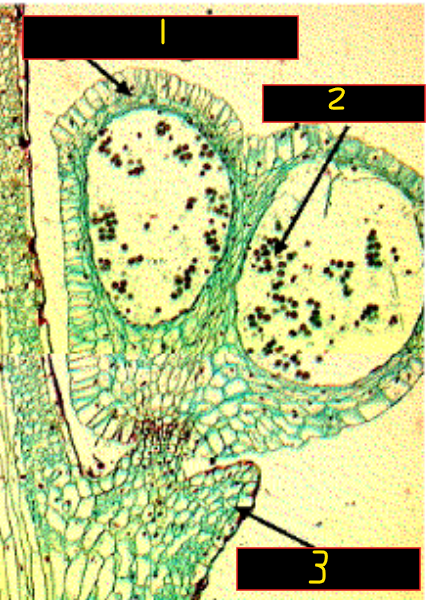
What is 3?
Enation
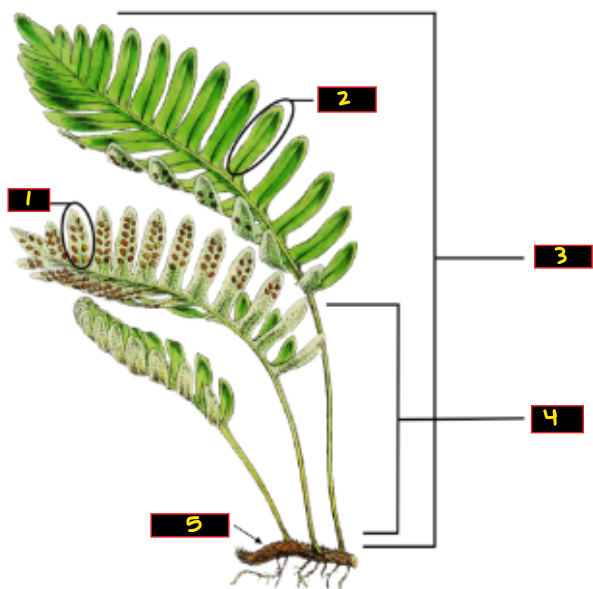
What is 1?
Sori
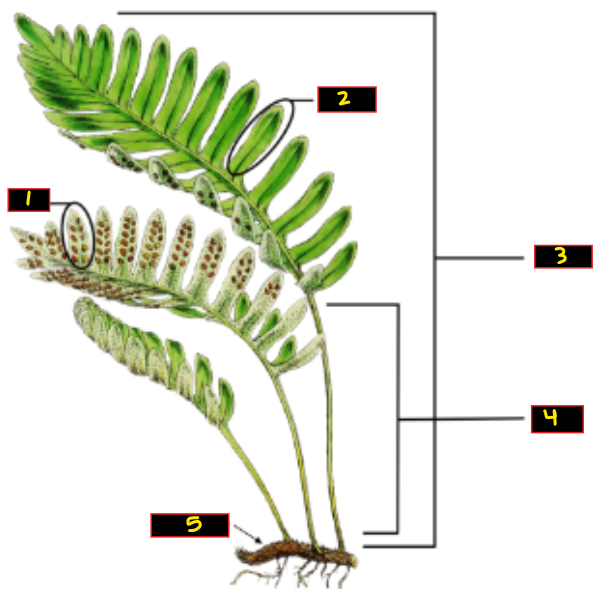
What is 2?
Pinna
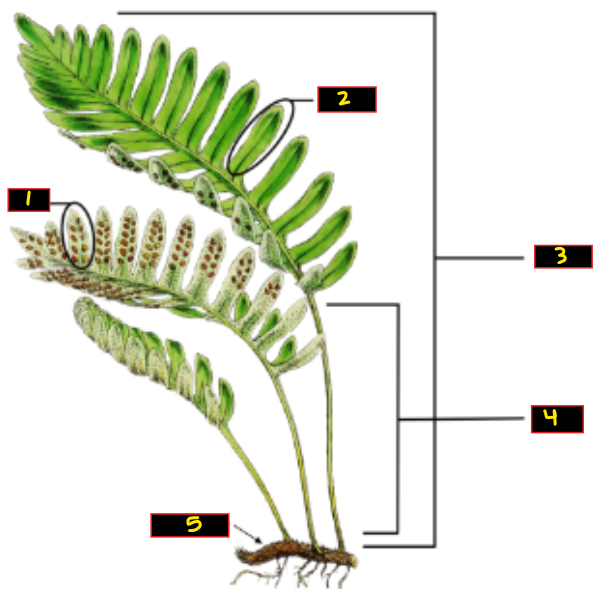
What is 3?
Frond

What is 4?
Stipe
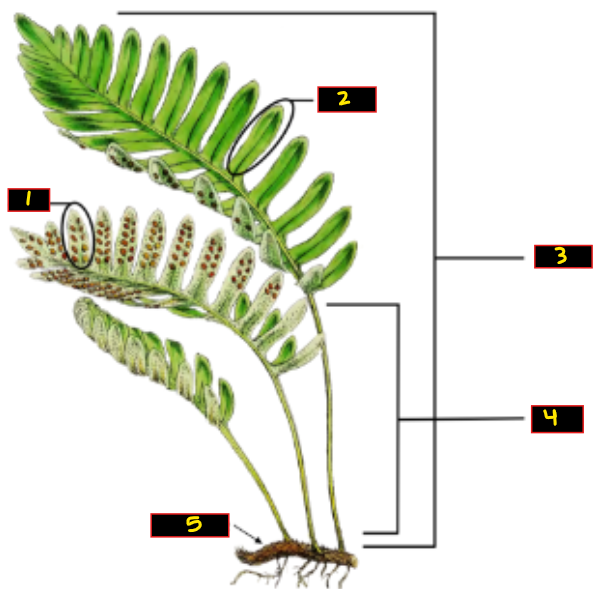
What is 5?
Rhizome
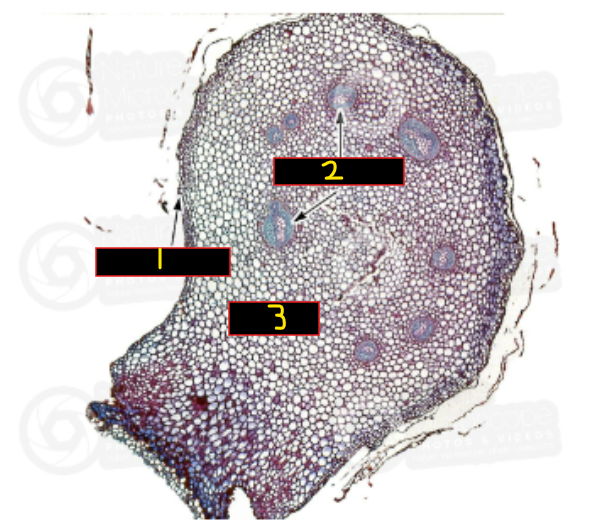
What is 1?
Epidermis
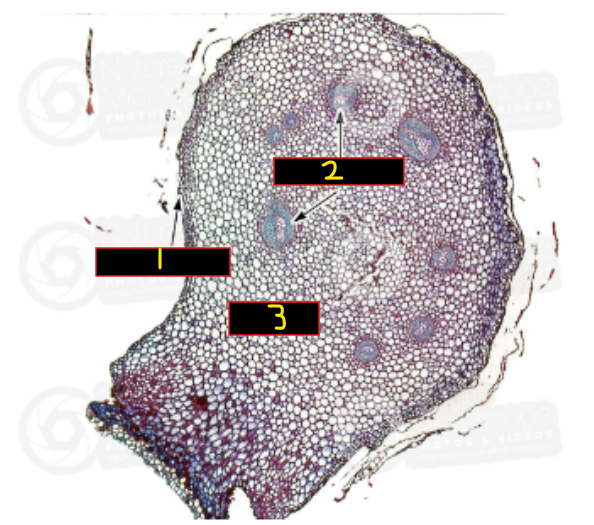
What is 2?
Meristeles
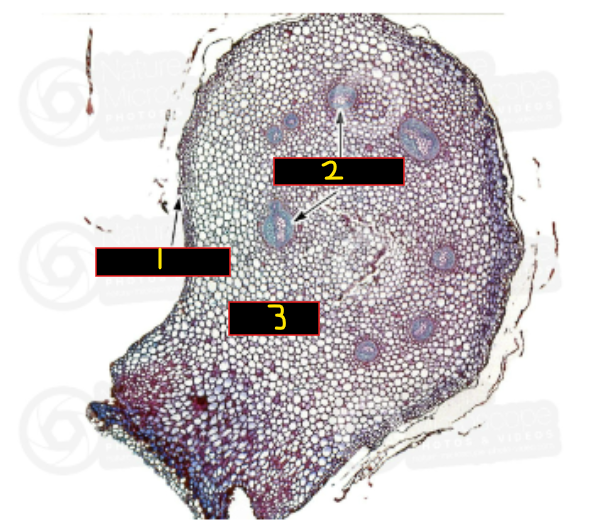
What is 3?
Cortex
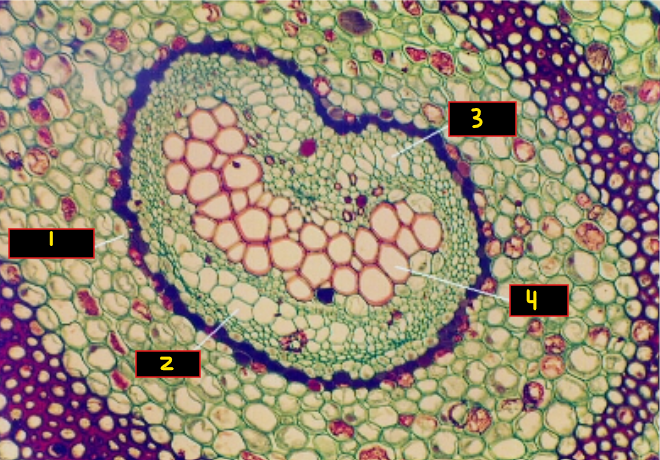
What is 1?
Endodermis
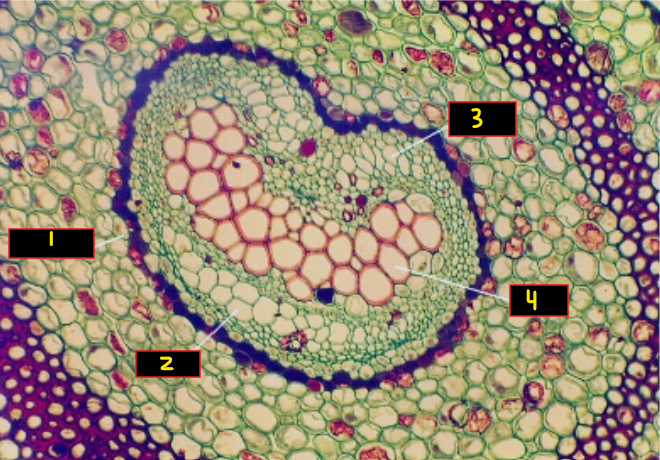
What is 2 and 3?
Phloem
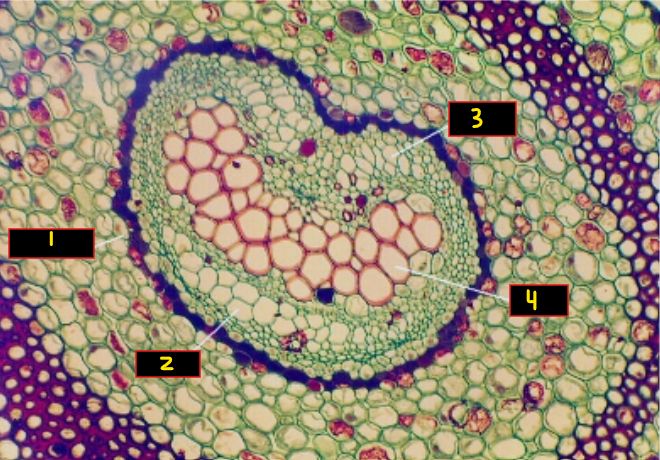
What is 4?
Xylem

What is 1?
Antheridia

What is 2?
Archegonia
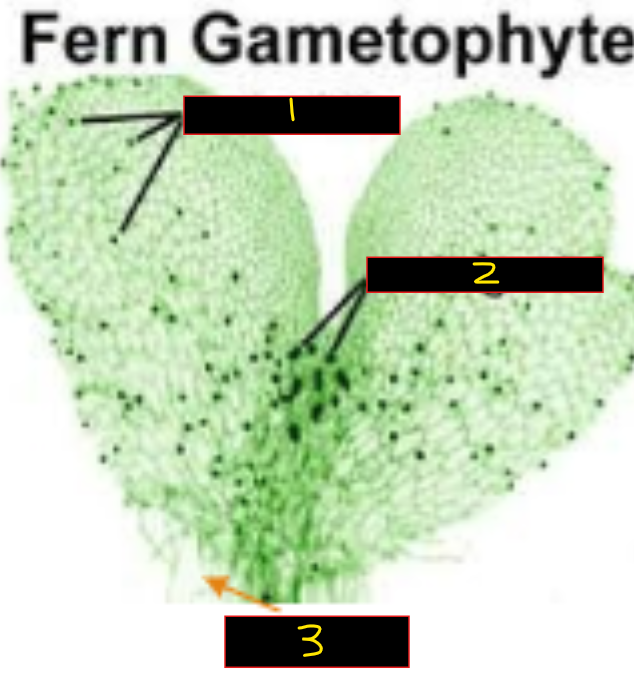
What is 3?
Rhizoids